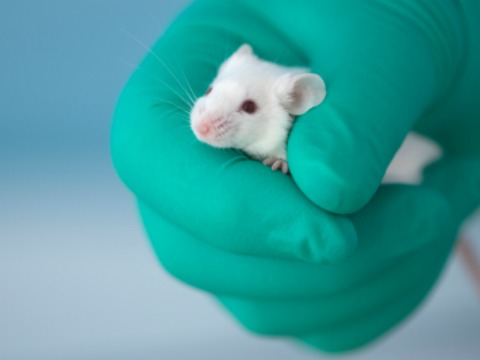The screams behind the creams

photo from: PETA.org
The temperature is over 80 degrees. The stench of feces fills the air like a cloud. You cannot leave, you are stuck in a cage with barely any room to breathe. Eventually you are let out after two days, but only to be electrocuted and injected with harmful chemical substances that may leave you paralyzed, immobile or missing limbs.
This is the life of a tested animal, and this cycle continues until it dies or is considered useless.
This is all for the products that make us more “beautiful”.
The issue of animal testing was made big in 1991 when the People for Ethical Treatment of Animals (PETA) organization released an expose in the Institute of Behavioral Research (IBR).
One of PETA’s founders, Alex Pacheco, was a student at the time when he went undercover and found 17 monkeys in tiny cages that were filled with years of accumulated feces.
This same narrative has been repeated in movies, books and articles about the animal testing system. However, the question that is yet to be asked is why teenagers should care? Most importantly, why should students at Annandale care about animal cruelty?
First and foremost, animal testing is a morality issue. It deals with one of the most controversial battles: human life versus animal life.
A major problem is that many quantify animal lives much lower than those that are human. Counting an animal’s life as unequal to that of a human is wrong, especially in the way that the tested animals die, with torture.
It should not be forgotten that humans are animals too.
Additionally, humans have lived alongside animals since the creation of mankind. Throughout all of these years, animals have all been a part of an ecological chain that is interdependent.
In knowing so, it is vital for effort to be made that animals are protected.
Although humans have felt the rewards of the successes of the research, animals should not be subjected to pain and suffering for the benefits of human luxuries. Many people are misinformed about what tests are being done to animals when they are being experimented on. When asked about animal testing, the first thought that comes to mind is the thought of putting makeup on a rabbit.
When in reality, animals are injected with chemicals, electrocuted and cut and prodded to the point of torture.
Ironically, all of these tests are done for human welfare, but the animal welfare is ignored. Many say that animals themselves benefit from the “research”, but pictures and studies further prove this to be incorrect.
Another concern is what happens after an animals is ‘tested’ on, for the consequences can be horrendous. Animals can be left with immobile limbs and loss of nerves.
Ethics also dictate that the value of each life can’t be chosen over the potential of another. Testing on one child for the lives of 100 adults would not happen in today’s society.
Additionally, it is important to realize that animals feel pain almost the exact same way humans do. Every day, animals are being tested on by being subjected to pain through chemical and electrical torture.
There are alternatives available to animal testing as well. There are human clinical and epidemiological studies which have been proven to be more reliable.
The problem is most people do not care, and find this problem trivial and pointless. They do not see the point in being involved in something that does not affect them.
However, being involved does not have to mean being a full activist and being involved in protest, but there are other ways to be easily involved.
Small changes can make the biggest impact.
There are many alternatives that can be replaced in anyone’s cosmetic selections or in their closet.
Many other cosmetic companies such as Physicians Formula and Nyx Cosmetics are alternatives that are cruelty free. Bold for Men is a cruelty free shaving cream, that can be used instead of Gillette, which tests on animals.
Even the most popular brands, such as Post-It, Revlon and Crest are known to test on animals.
Again, why should students care or even be aware of the subject?
With all of this knowledge, students have choices. Armed with the ability to understand their choices, students are now more aware.
Being informed about this issue can make you aware about popular products that fill stores, and make you rethink what products to choose.
So next time, think before choosing.

Senior Aseal Saed is currently the Co-Editor in Chief of The A-Blast. This is her fourth year on staff. Her previous positions were as In-Depth Editor...










